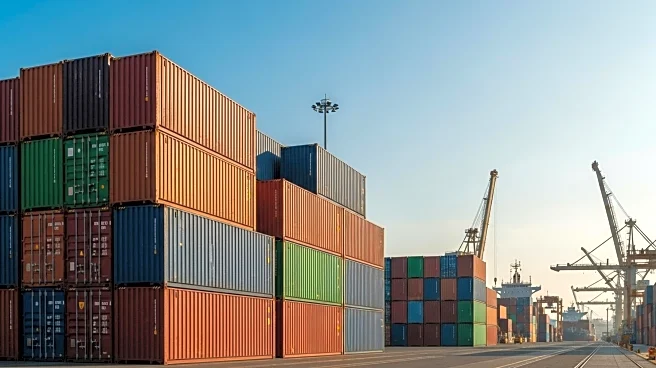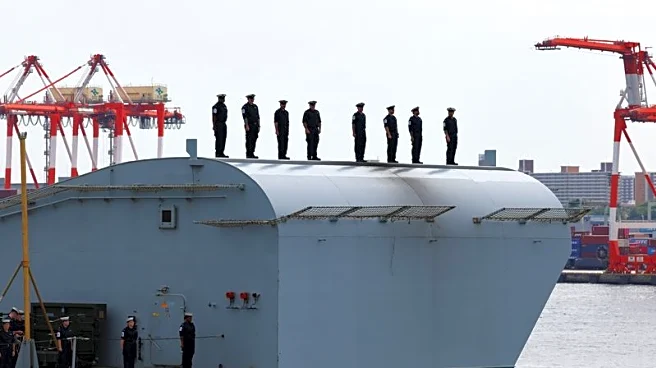What's Happening?
The Shanghai Containerized Freight Index (SCFI) has shown a temporary recovery, climbing 30 points to 1,445 after an 11-week decline. Despite this, the World Container Index by Drewry fell by 6% to $2,119 per feu, indicating ongoing challenges in the container shipping industry. Analysts predict that the final quarter of the year will be difficult for container lines, with rates nearing pre-Red Sea crisis levels. Peter Sand from Xeneta suggests that while carriers may have profited earlier in the year, Q4 is expected to return to loss-making. HSBC forecasts that the demand-supply imbalance will continue to push rates down, despite potential minor recoveries. Linerlytica reports a significant drop in cargo booking volumes, particularly on transpacific, Asia-Europe, and Latin America routes.
Why It's Important?
The developments in the container shipping industry are significant for global trade, particularly affecting U.S. imports and exports. The projected decline in rates and cargo volumes could impact businesses relying on international shipping, potentially leading to increased costs and delays. The National Retail Federation's forecast of a 5.6% decrease in inbound volume for 2025 suggests a challenging environment for U.S. retailers and manufacturers. The persistent overcapacity and declining demand may lead to financial losses for shipping companies, affecting their ability to invest in infrastructure and technology. This situation underscores the need for strategic adjustments in capacity and pricing to stabilize the market.
What's Next?
As the industry faces these challenges, carriers may need to implement capacity cuts to align with reduced demand. Analysts predict a continuation of blank sailings in Q4, particularly on the Pacific trade routes, as demand typically drops after Chinese Golden Week. Sea-Intelligence forecasts supply growth between 5-8% over the next few years, suggesting ongoing overcapacity issues. Carriers and shippers must prepare for potential disruptions and strategize to mitigate losses. The industry may see increased collaboration and innovation to address these challenges and improve efficiency.
Beyond the Headlines
The current situation in the container shipping industry highlights broader economic implications, including potential shifts in global trade patterns and supply chain strategies. The persistent overcapacity may lead to long-term changes in shipping practices, with increased focus on sustainability and cost management. The industry may also experience regulatory scrutiny as stakeholders seek to balance economic pressures with environmental concerns. These developments could drive innovation in logistics and transportation, influencing future trade dynamics.













